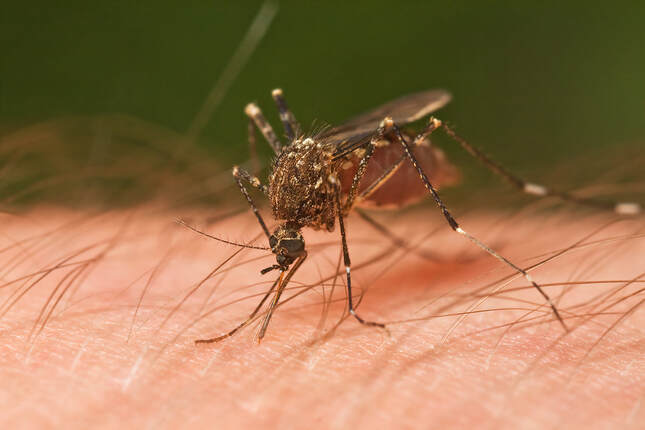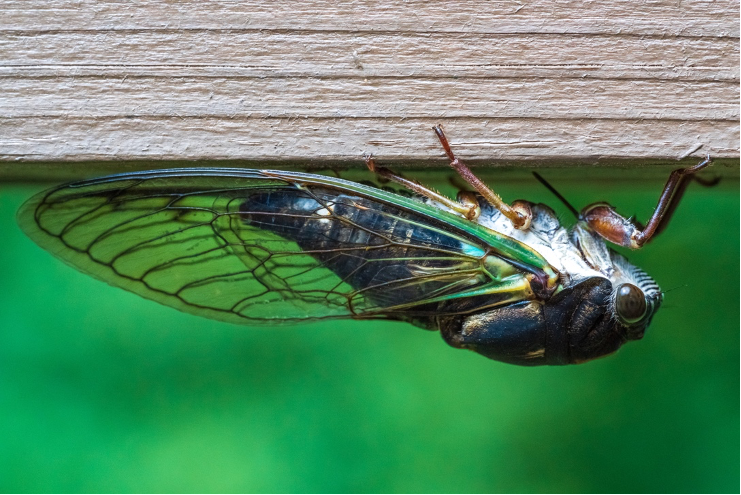|
A lot of people throw around the term “bug” to describe any small critter with more than a couple of legs. Kids, adults, scientists, experts, and non-experts alike all use this term, especially conversationally. But what is a bug, technically? Are all insects also bugs? In this week’s blog, let’s talk about some basic entomology terminology that confuses a lot of folks! IntroductionThe word “bug” can mean a lot of things such as- coding error in a computer program, a microorganism that causes a disease, or, a small animal with four or more legs. Today, we’ll be talking about references to the last one—a small animal with four or more legs. Technically speaking, “bug” means something very specific to an entomologist. A bug is a creature that belongs to the insect order Hemiptera, known commonly as the true bugs. (All bugs are insects, but not all insects are bugs!) Because the order Hemiptera falls under “insects” (see below), this means that all bugs are insects, but not all insects are bugs. This has to do with the way scientists group animals. You might remember this from science class: “Dear King Phillip Came Over For Good Soup”. This was a way to help us remember different taxa (groups) in biology class: domain, kingdom, phylum, class, order, family, genus, and species. The more taxa an animal has in common, the more related they are. In the case of “insects” and “bugs”: 1. Kingdom (Animal) 2. Phylum (Arthropoda) 3. Class (Insecta) 4. Order (Hemiptera) There are 24 insect orders (although this number changes as insects get reclassified). There are a few characteristics that distinguish true bugs (Order: Hemiptera) from other insects. Most true bugs have a straw-shaped mouth (rostrum), or stylet, that they use to either pierce and suck juice from plants, or blood from animals. They also tend to have long, segmented antennae and wings that are leathery at the top but membranous at the bottom (“hemiptera” means “half wing”). True bugs include insects like stink bugs, bed bugs, aphids, and cicadas. Confusingly, some insects with bug in their name aren't actually true bugs, like ladybugs. Ladybugs are actually beetles (Order: Coleoptera). Beetles have mandibles meant for chewing and their wings are hard and shell-like. So... What Is NOT a Bug?Insects, in general, (not necessarily "bugs") on the other hand, are classified as arthropods that have a three-part body, a hard exoskeleton, three pairs of jointed legs (6 legs total), compound eyes, and a pair of antennae. Thus, these general rules for grouping insects into a “class” are a bit less rigid than those for a particular “order”. The criteria for groupings get much stricter as you move down the list above (from class all the way down to species). Notably, there are other animals that people might call “bugs” that aren’t actually bugs, or even insects, at all! Spiders, ticks, centipedes, earthworms, and millipedes are animals that have either more or less than six legs and none of them have three-segmented bodies. So, none of these animals could possibly be classified as insects, let alone classified as bugs. People call them bugs all the time, but that does not make it so. Spiders and ticks are considered arachnids (Class: Arachnida). They are in the same phylum as insects (Arthropoda). This means that they are distantly related, but with enough distinct characteristics to separate them once you move down to "class". Again, just because they are small, hard bodied, and have lots of legs does not mean they are insects at all, let alone true bugs. Calling all insects and all small crawling animals "bugs" is a colloquial use of the term. Many scientists and entomologists will use the term generally when speaking with lay audiences. However, if you are enlisting the help of an entomologist for an ID—keep in mind where their specialty lies and what training they have had. For instance, every entomologist may not be an expert in spider or tick identification since those critters aren't insects. Expertise in non-insect animals usually requires time and focus outside of the traditional/technical entomology discipline!  Although mosquitoes have a mouthpart capable of sucking blood, they are also not considered true bugs. Because they have only one pair of wings and a specialized organ for flying, they are in the order Diptera, or, the flies. Taxonomy can definitely get confusing!(Image Credit: JJ Harrison, Image Source: Wikimedia Commons). So, to sum it all up:
A bug is an insect, but not all insects are bugs. Additionally, some non-insects that we call bugs are not bugs at all, and they aren’t insects, either. Easy, right!?
0 Comments
Your comment will be posted after it is approved.
Leave a Reply. |
Bug Lessons BlogWelcome science communicators and bug nerds!
Interested in being a guest blogger?
Archives
November 2023
Categories
All
|
